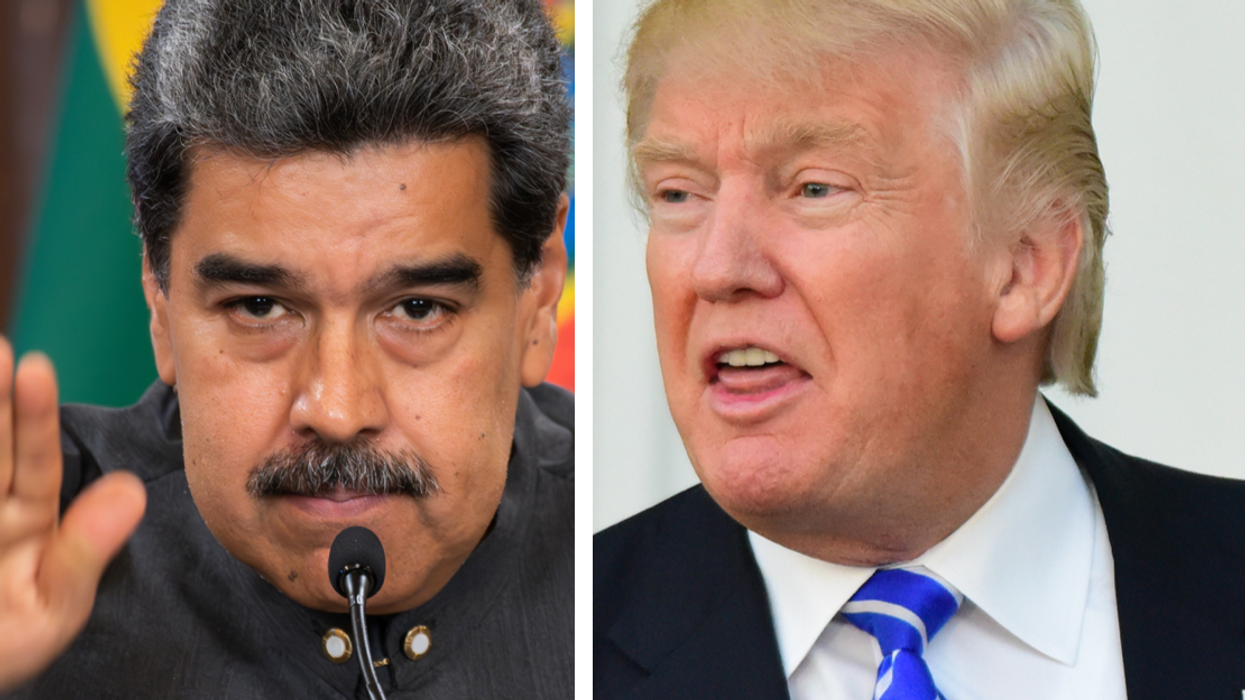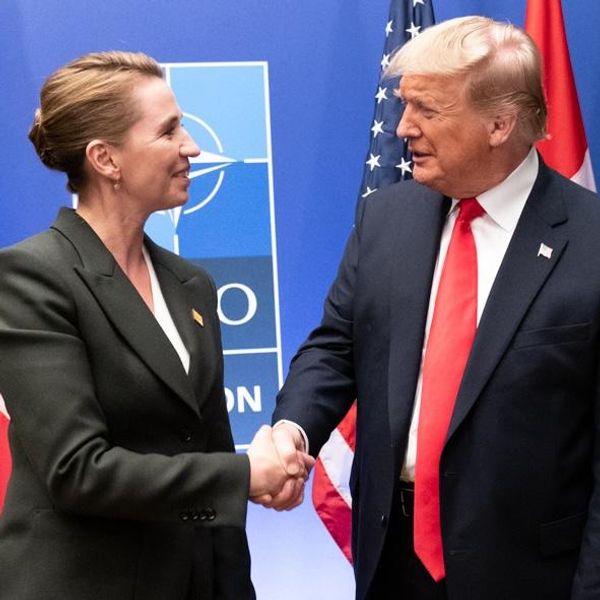This article first appeared on nonzero.org and is republished with the author’s permission.
If you’re looking for signs that America hasn’t learned much from its decades-long involvement in Afghanistan, I recommend a New York Times piece that ran Saturday under the headline “Afghanistan’s Unraveling May Strike Another Blow to US Credibility.”
The Times piece put the withdrawal from Afghanistan in the context of a growing American reluctance, over the past three presidencies, to make and sustain troop commitments abroad. Then it intoned: “That hesitation will now be felt all the more strongly among countries in play in the world, like Taiwan, Ukraine, the Philippines and Indonesia, which can only please China and Russia, analysts suggest.”
Note the phrase countries in play. That’s right out of a Cold War mindset: There’s our team of countries and the enemy team of countries and countries that are “in play”—countries that either haven’t picked a team or could be moved from one team to the other. And that mindset is what started the chain of events that led to the current mess in Afghanistan.
To put a finer point on it: The chain of events began with the decision by presidents Jimmy Carter and Ronald Reagan to treat Afghanistan as a country “in play.” That decision was so momentous that, had it not been made, the world might be radically different today. There might be no such thing as the Taliban. There might be no such thing as al Qaeda. And, obviously, if you don’t have those two things, you don’t have the US invading Afghanistan in 2001.
Playing “What if” is inherently speculative. There’s no way of knowing for sure where we’d be today if Carter and Reagan hadn’t funneled money and weapons into Afghanistan four decades ago. But reviewing the consequences of that decision does, if nothing else, drive home this point: When you get into a Cold War mindset—the mindset we now seem to be returning to—and start seeing countries as “in play,” as contested patches in a global board game, there can be lots of very bad unintended consequences.
In 1979, the Soviet Union, fearful that Afghanistan’s Marxist regime might be drifting toward the West, invaded and occupied Afghanistan and supported a coup that reshuffled the regime’s leadership. The regime, by trying to impose secular values on a religious populace, had already inspired popular rebellion, and tamping that down now became part of the Soviet mission.
Jimmy Carter, with less than a year left in his presidency, began a program of arming the Afghan resistance. The resistance would have gotten outside military support in any event, notably from next door neighbor Pakistan. But the US support was massive and would eventually include Stinger shoulder-fired anti-aircraft missiles, which ensured that the Soviets couldn’t easily subdue the insurgency. And, indeed, there ensued a thirteen-year conflict that eventually drove the Soviets out of the country and drove the government out of power. Somewhere in the vicinity of a million Afghans were killed in the process.
And that wasn’t the end. In 1992, after the government fell, national unity failed to materialize. A primary reason was a warlord named Gulbuddin Hekmatyar, whom the US had supported to the tune of $600 million. Flush with weapons and fighters, he refused to join in the power sharing arrangement that other major parties to the anti-Soviet resistance signed on to. A civil war started and lasted until 1996, killing hundreds of thousands more Afghans and cutting the population of Kabul from 2 million to half a million.
Two momentous things happened in the course of all this:
1. The creation of al Qaeda. Among the aspiring jihadists drawn to Afghanistan during the US-backed insurgency was Osama bin Laden, and it was during his time there that he founded al Qaeda. It was in Afghanistan that he had a meeting with the leader of Egyptian Islamic Jihad; as Wikipedia puts it, “an agreement was reached to link bin Laden's money with the expertise of the Islamic Jihad organization and take up the jihadist cause elsewhere after the Soviets withdrew from Afghanistan.” Apparently bin Laden’s first jihad had proved habit forming.
2. The creation of the Taliban. The Taliban was founded in 1994, halfway through the civil war, by Mullah Mohammed Omar. Omar had gotten his military training in the 1980s from Pakistan’s Inter-Service Intelligence Agency, which was then getting funding from the US to train and equip fighters headed for Afghanistan. The Taliban, with its fundamentalist reading of Islam and its draconian rule enforcement, wasn’t widely loved, but it did offer the Afghan people something that had been scarce since the end of the 1970s: peace and law and order.
The rest is history. The Taliban and al Qaeda became allies. And because the Taliban provided a base for al Qaeda and a haven for Osama bin Laden, the US invaded Afghanistan in 2001, after the 9/11 attacks.
Again, there’s no way of knowing where we’d be had Jimmy Carter and Ronald Reagan not deemed Afghanistan “in play.” Popular resistance to Soviet occupation would have had a religious cast in any event—Islam was the common denominator in this ethnically and linguistically diverse country—and both Omar and bin Laden were intensely religious men before they entered the cauldron that the US was heating up. Still, what set the stage for the Taliban takeover of Afghanistan was many years of mayhem, and it’s hard to believe that the flood of weapons and other military resources emanating from the US didn’t contribute to that.
In any event, it’s worth reflecting on how casually American officials decided not only to exploit but to intensify religious fervor in order to win their proxy war. A small but telling example: The US covertly supplied textbooks for Afghan schoolchildren that, the Washington Post later reported, “were filled with talk of jihad and featured drawings of guns, bullets, soldiers and mines.” So militant were these textbooks that the Taliban, after taking control of the country, continued to use them in the schools.
There’s a strange thing about our treatment of countries that are “in play.” We talk a lot about how much we care about their people, how important it is to bring them freedom and democracy. And we kind of mean it. But ultimately we’re so intent on moving their country onto our team that we’re willing to accept massive death and suffering on their part if that’s the price of victory. And sometimes we’re willing to—in the name of freedom—subject these people to authoritarian rule. One dictator we installed—in Iran, via a 1953 coup that deposed a democratically elected prime minister—wound up provoking a revolution in 1979 that is the reason Iran now has such a conservatively religious government. Here, as so often in Cold War contests, our pragmatic indifference to the welfare of the people wound up not even paying off in pragmatic terms.
Once a cold war is in the rear view mirror, it’s easy to see the folly and miscalculation. We just didn’t understand that the force opposing us in Vietnam was less the puppet of a Communist superpower than an indigenous reaction against colonial rule—and that our enemy would therefore be tenacious, with deep grassroots support. And we just didn’t appreciate how potent and unpredictable the religious and political energies we helped catalyze in Afghanistan would prove. We also didn’t appreciate how little we actually needed to put Afghanistan “in play”—how decrepit the Soviet Union’s economy was, how hobbled its technological innovation was by its ideology, how meager a long-term threat the USSR posed to the US so long as we avoided nuclear war. There seems to be something about a cold war that messes up your thinking.
And yet we now seem eager to rush back into one. The enemy team will still be led by Russia and China, except with their degrees of scariness flipped and with the team rebranded: authoritarianism, not Communism, is the supposedly monolithic menace we now face. (According to a British parliamentarian prominently quoted in that New York Times piece, America’s withdrawal from Afghanistan will leave “allies and potential allies around the world wondering whether they have to decide between democracies and autocracies.”)
Over the past 70 years we’ve had two big paradigms for national security policy: first the Cold War, then the Global War on Terror. It’s now pretty clear that both paradigms led us into trouble—with the poster children for the trouble being, respectively, the Vietnam War and the Iraq War.
The Afghanistan War is generally seen as a product of the second paradigm, the Global War on Terror—and as not the worst such product; unlike the Iraq War, it wasn’t sold to Americans with flagrant dishonesty or launched with flagrant disregard for international law; it was the “good” 9/11 war, even if it went badly.
But if you pull back the lens and look at Afghanistan during the two decades before 9/11, it becomes clear that the debacle we’ve just seen is also a product of the Cold War paradigm. Maybe we should reflect on that fact now that we seem to be again shifting paradigms, moving back toward a Cold War mindset. And, paradigms aside, maybe we should reflect on the last four decades of Afghanistan’s history next time we’re thinking about sending troops abroad—or even just thinking about sending weapons to “freedom fighters.”
















